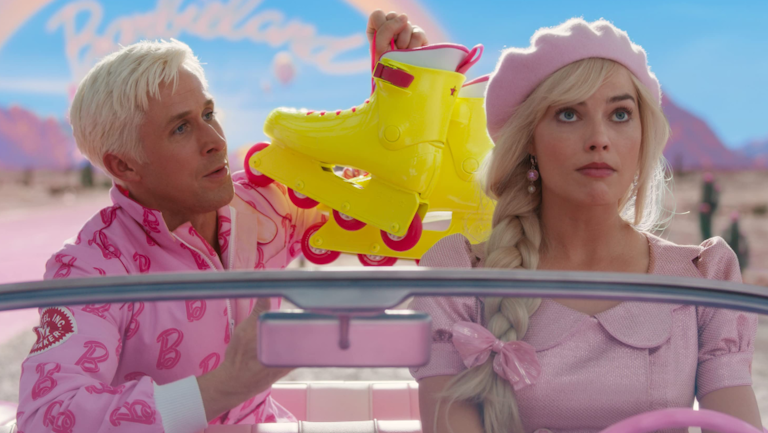Shopping Bag (0)
Your shopping bag is empty


The Barbie Movie’s relentless promotion campaign has seen far-ranging collaborations and effervescent executions, leaning into every strategy in the book. Amplify’s global ECD Alex Wilson looks at why this widespread approach is working.
I once watched a clip about the difference between play in boys and girls when it came to character-based toys.
With boys toys, especially in the golden age of '80s and '90s figurines and IP, play for boys very much took the shape of them becoming that character. When they played with Superman or He-Man they embodied the characters themselves, taking on the characteristics, personality traits and powers of the action figures.
Conversely, the power of Barbie was that she was an avatar for girls to place themselves into and step into whatever profession, passion or world they wanted. She encouraged self-expression and imaginative play.
However, if I was to ask you to name a personality trait of Barbie, I would hazard you would come up empty handed. And that is arguably by design. Barbie didn’t have really defined personality traits, her USP was that she could be anything. She empowered kids to be anything from an astronaut, a mermaid, a dancer, a doctor - they could play in any world - and the marketing team for The Barbie Movie has taken this character DNA and applied it to its widespread marketing strategy.
They have ‘Barbiefied’ our world, turning it pink, blurring the lines between Mattel’s creation and our own.
Wordbuilding in a way that allows Barbie, as she did as a toy line, to step into genres and worlds far outside of her own. Gaming, architecture, food, fashion, travel and experiences have all been utilised as destinations for collaboration and awareness.
There is also a simple joy to so much of what they created, even down to the simplistic impact of the bright pink billboards, as well connecting into other IP and worlds owned by Mattel such as its Hot Wheels collaboration, it’s all inherently ‘Barbiecore’.
You would imagine the venn diagram of those who play with Barbie toys, watch The Barbie Movie and play Forza Horizon 5 is a relatively small group, yet Barbie’s dream car is a fully playable vehicle in that game world.
From Margot Robbie taking audiences for a tour through The Barbie DreamHouse for Architectural Digest to Airbnb and Ken inviting you to stay at the Malibu DreamHouse to roller discos, an Xbox playhouse, candles, luggage, inflatables and everything in between, there is a playfulness that goes hand in hand with the star-powered promotion.

As I read through the never-ending list of collaborations and activations, it reminded me of the first round of creative an agency may present to a client. A tissue session of sorts that gives you a chance to see ‘what sticks’. But what the marketing team behind Barbie has done is said yes to everything. There’s nothing there that feels totally random, thanks largely to the fact that Barbie is a broad character, but there is a level of commendable creative bravery taken by Mattel and Warner Brothers.
We find ourselves in the middle of this fascinating trend where we have movies and franchises built off product and IP, to the point where we’ve transitioned from product placement to product protagonists. An infinite feedback loop where Mattel has gone from toy company to an IP focused business that creates entertainment from its IP and then produces merchandise from it. The lines are blurred as to what now informs what, not dissimilar to LEGO began with The LEGO Movie (2014).
The (obviously engineered) ‘rivalry’ with Christopher Nolan’s Oppenheimer is also a fascinating narrative in which two very different worlds go ahead to head in the box office, and one the film communities and cinema goers have got behind. The weight and seriousness of Nolan’s Oppenheimer vs the bright, pink, shiny nature of Barbie allows for a clear distinction in what audience is drawn to which film, but ideally with the same outcome of having a positive effect on box office and of course; cinema at large.
I will be seeing both in some sort of experimental double-bill, but the most fascinating part of this article is how I’ve been able to keep my Barbie-themed puns down to a minimum. Ken you believe it? Sorry not sorry.
To read the full article, visit Little Black Book.